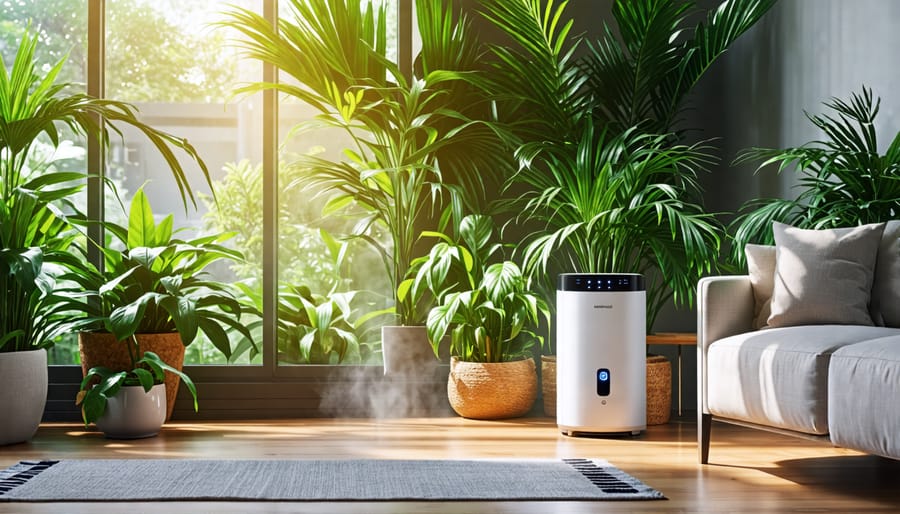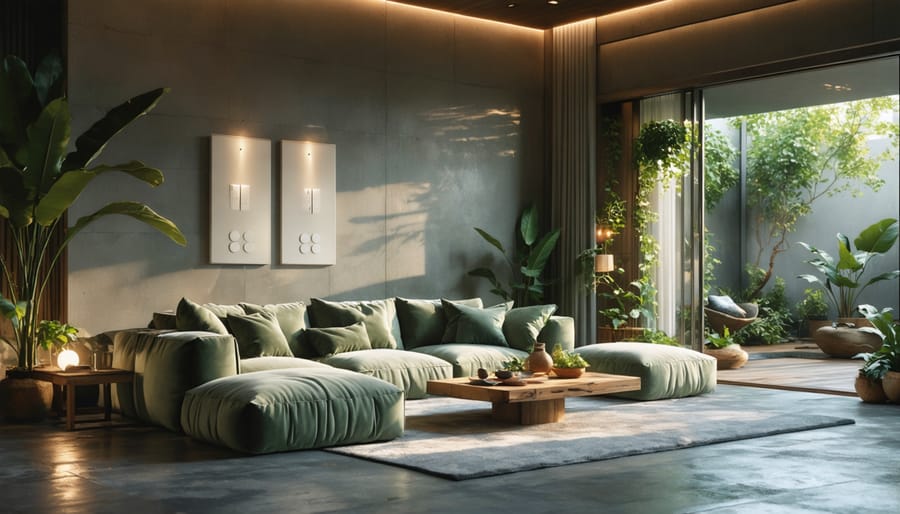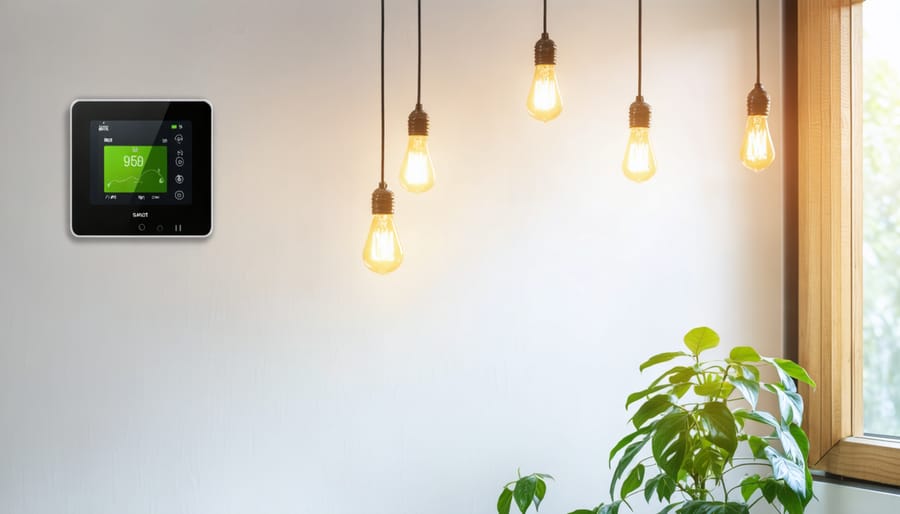Install high-efficiency air filters in your HVAC system to capture allergens and pollutants, reducing indoor air contamination. Bring in houseplants like spider plants or snake plants to naturally purify the air by absorbing toxins and releasing fresh oxygen. Regularly clean and vacuum using HEPA-filtered appliances to remove dust and allergens from surfaces, preventing them from becoming airborne. Incorporate essential oils like eucalyptus or lavender with a diffuser to freshen the air and enhance respiratory health.
Understanding Indoor Air Quality
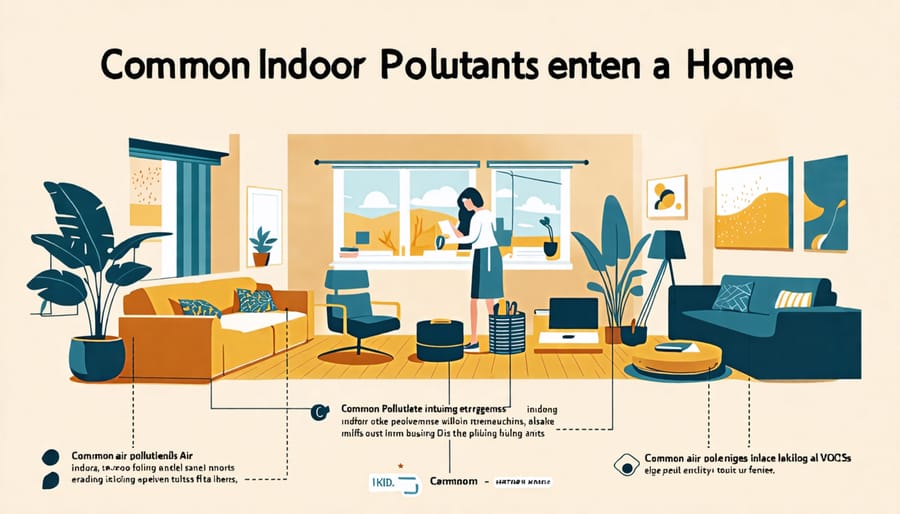
Key Pollutants to Watch Out For
Indoor air can be full of hidden pollutants, so it’s crucial to know what to watch out for. Dust and allergens are common culprits, easily sneaking in from open windows, shoes, and clothing. Routine cleaning and ventilation can help keep them at bay. Volatile organic compounds (VOCs) are another concern; these harmful chemicals can off-gas from furniture, paints, and cleaning supplies over time, polluting your home. To minimize their presence, opt for low-VOC products and regular airing out of spaces. A few mindful changes can significantly improve the air you breathe, making your home a healthier, more comfortable place.
Effects of Poor Air Quality
Breathing in poor air quality at home isn’t just unpleasant; it can lead to a range of health issues. For starters, it can trigger or worsen respiratory problems, like asthma or bronchitis—making every breath feel like a struggle. If you’re sneezing more than usual, it might be allergies stirred up by dust mites and mold lurking in the air. Ever feel worn out or sluggish for no clear reason? Poor air quality could be contributing to your fatigue, making simple tasks feel exhausting. Taking steps to improve your indoor air not only enhances comfort but also your overall well-being.
Practical Ways to Improve Air Quality
Ventilation: The First Line of Defense
Proper ventilation is your first line of defense against indoor air pollution and maintaining a healthy home environment. It’s all about improving airflow and reducing the concentration of pollutants. Start with natural ventilation by opening windows and doors to usher in fresh air. This simple act can significantly enhance air quality, especially during milder weather. For those in warmer climates or urban settings, you might want to consider window screens to keep insects out while letting air in.
Installing and regularly using exhaust fans is another effective strategy. Place them in key areas like kitchens and bathrooms to swiftly remove smoke, cooking odors, and excess humidity. This not only improves air quality but also helps prevent mold growth. For a more hands-on approach, consider adding air vents if your home lacks them. Backed by expert tips, prioritizing good ventilation not only makes your space healthier but also offers a refreshing home improvement project you can DIY with ease.
Houseplants: Natural Air Filters
Houseplants can be a delightful way to enhance indoor air quality, bringing both beauty and health benefits into your home. Consider welcoming a few green friends like the spider plant, snake plant, or peace lily, known for their air-purifying abilities. These plants can help remove toxins such as formaldehyde and benzene from the air. For optimal results, place them in areas with plenty of indirect sunlight and ensure consistent watering without over-saturating the soil. By incorporating these leafy purifiers, you’ll not only breathe easier but also add a touch of nature’s elegance to your living space. Happy planting!
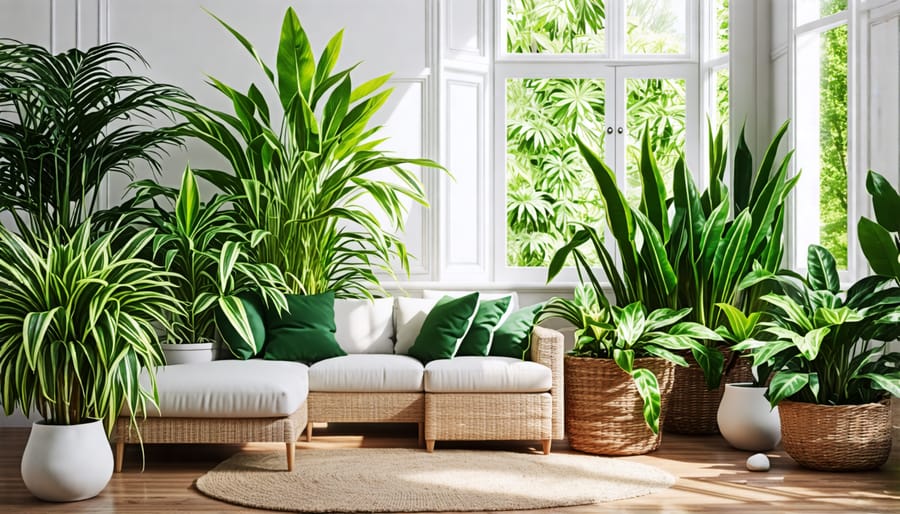
Regular Cleaning Habits
Keeping your home clean is a simple yet effective way to improve indoor air quality. Start by adopting dusting as a regular habit. Dust surfaces with a damp cloth to capture particles instead of spreading them around. Incorporating vacuuming into your routine is a game-changer, especially with a vacuum cleaner equipped with a HEPA filter. These filters capture tiny particles, including allergens and dust mites, ensuring they’re removed from your home rather than recirculated.
Another important step is to minimize clutter around the house. Clutter can collect dust, making it harder to keep areas clean and inviting. By reducing unnecessary items, you’ll make surfaces easier to clean and reduce potential dust traps. Staying organized also helps in maintaining a routine cleaning schedule without feeling overwhelmed. These consistent and manageable steps not only contribute to a fresher environment but also support overall health and comfort in your living space.
Using Air Purifiers
Air purifiers can significantly enhance your home’s air quality by removing pollutants and allergens, creating a healthier and more comfortable living space. With various types available, such as HEPA, activated carbon, and ionizing purifiers, choosing the right one involves understanding your specific needs. HEPA filters are great for trapping dust and pet dander, while activated carbon is excellent for odors and chemicals. For those with allergies, a high CADR (Clean Air Delivery Rate) HEPA purifier might be ideal. The key is to assess the room size and check purifier ratings to ensure optimal performance. With the right air purifier, you’ll breathe easier, knowing your indoor air is cleaner and fresher.
DIY Solutions to Freshen Your Air
Essential Oil Diffusers
Enhancing your indoor air quality can be as delightful as it is simple with DIY essential oil diffusers. These natural wonders not only freshen the air but can also bring a touch of tranquility to your space. To create your own, start by gathering a few key ingredients: a small glass jar, bamboo skewers, and your favorite essential oils. Begin by mixing ¼ cup of water with ¼ cup of an alcohol like vodka in the jar. This acts as a carrier for the oils and helps them diffuse more effectively. Add 10-15 drops of your chosen essential oil—lavender for relaxation, lemon for a fresh, clean scent, or eucalyptus for a spa-like atmosphere. Stir gently to combine. Insert the bamboo skewers into the mixture, letting them absorb the oil blend. Place the jar in your desired location, and flip the sticks weekly for a burst of fragrance. This hands-on project not only improves air quality but also adds a touch of personal style to your home.
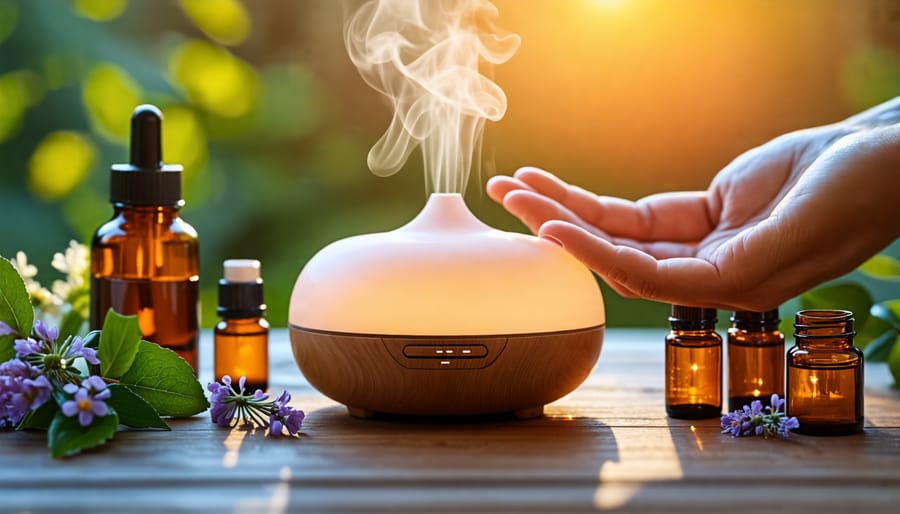
Homemade Air Fresheners
Creating homemade air fresheners is a delightful way to enhance your indoor air quality naturally. Plus, it’s a wonderful opportunity to repurpose everyday items found in your kitchen. One simple method is to use citrus peels, which release a refreshing scent. Start by collecting peels from oranges or lemons. Place the peels in a pot, cover them with water, and add a few sprigs of rosemary. Simmer gently on the stove, allowing the aroma to fill your home.
For a dry option, mix baking soda with a few drops of essential oils like lavender or eucalyptus. Pour the mixture into a small jar, covering it with a piece of breathable fabric secured with a rubber band. This will help absorb unwanted odors while gently releasing pleasant scents. You can also pair this technique with styling tips, like how to style indoor plants, to naturally complement your home environment.
Experiment with combinations of different ingredients like cloves and cinnamon sticks for a seasonal touch. These easy-to-make air fresheners not only improve your air but also contribute to a welcoming and personalized atmosphere.
Expert Tips for Long-term Air Quality Maintenance
Monitoring Air Quality
Using air quality monitors can be an indispensable part of enhancing your indoor environment. These devices help you evaluate pollutants like dust, carbon dioxide, and volatile organic compounds and provide real-time data that’s easy to understand. To start, place your monitor in frequently used areas, such as living rooms or bedrooms, for the most accurate reflection of your everyday air quality. When readings indicate high levels of pollutants, consider simple solutions like increasing ventilation or using air purifiers. By regularly checking your air quality monitor, you can take proactive steps to address issues, ensuring a healthier and more comfortable home for you and your family.
Routine HVAC Maintenance
Regular maintenance of your HVAC system can significantly enhance indoor air quality, making your home a healthier place to breathe. Start by changing filters every three months, or more often if you have pets or allergies. This simple step keeps dust and pollen at bay and ensures efficient airflow. Don’t forget to clean vents and ducts annually to prevent dust build-up, which can circulate harmful particles throughout your home. Consider hiring a professional for a thorough inspection and cleaning of your system. This routine task helps ensure that your HVAC components are working efficiently, providing you with clean, fresh air year-round.
Conclusion
Improving indoor air quality is more than a trend—it’s a crucial step toward ensuring a healthier and more comfortable living environment. By integrating simple changes and adopting the expert tips we’ve shared, you can significantly enhance the air quality in your home. Whether you’re a homeowner looking to make long-lasting improvements, a renter aiming to create a fresh and welcoming atmosphere, or a DIY enthusiast eager to tackle a new project, these insights are designed to empower you with actionable steps. Remember, even incremental changes can lead to substantial benefits for your health and well-being. So, start today by implementing one or two suggestions; your home and those living in it will thank you. Let’s make indoor air quality a cornerstone of our home improvement journey, turning our spaces into refuges of comfort, health, and peace. Your next breath can be the start of this positive change—breathe easier and live better!

